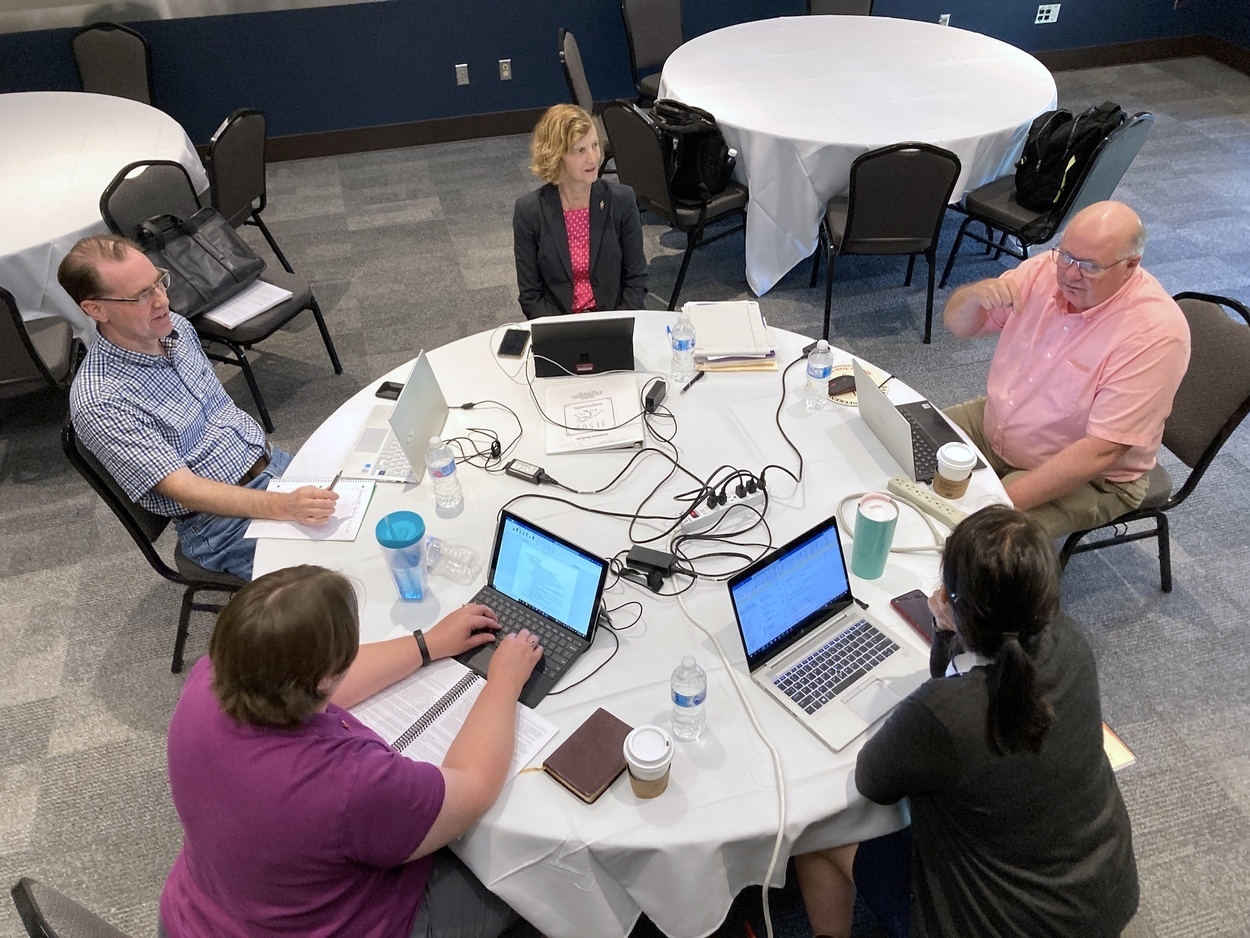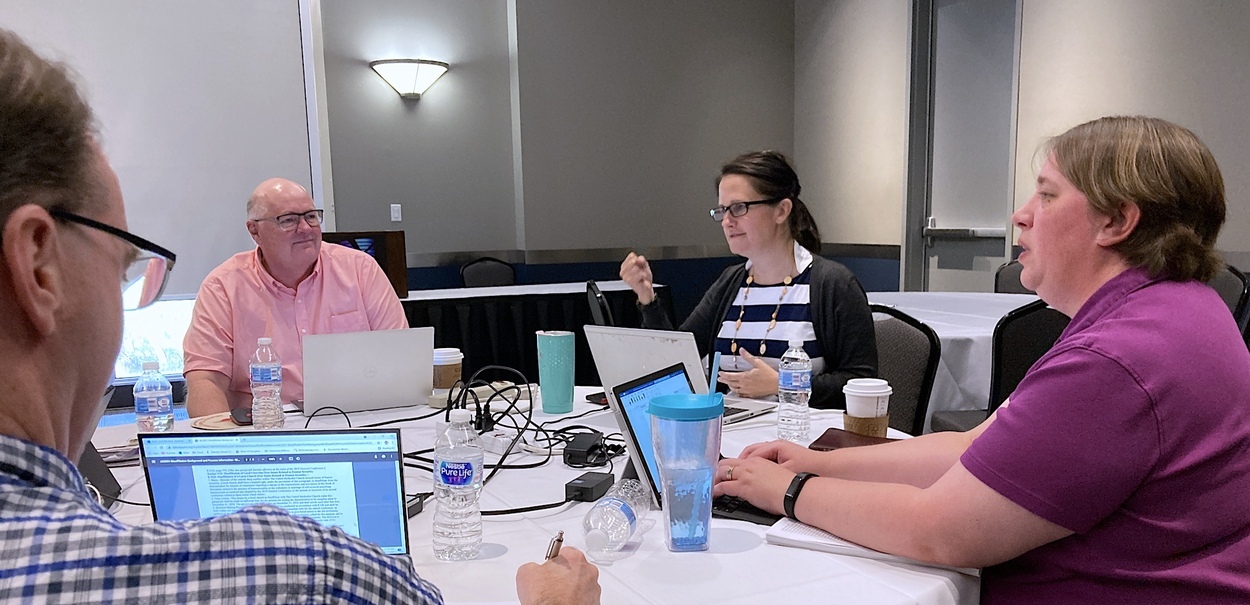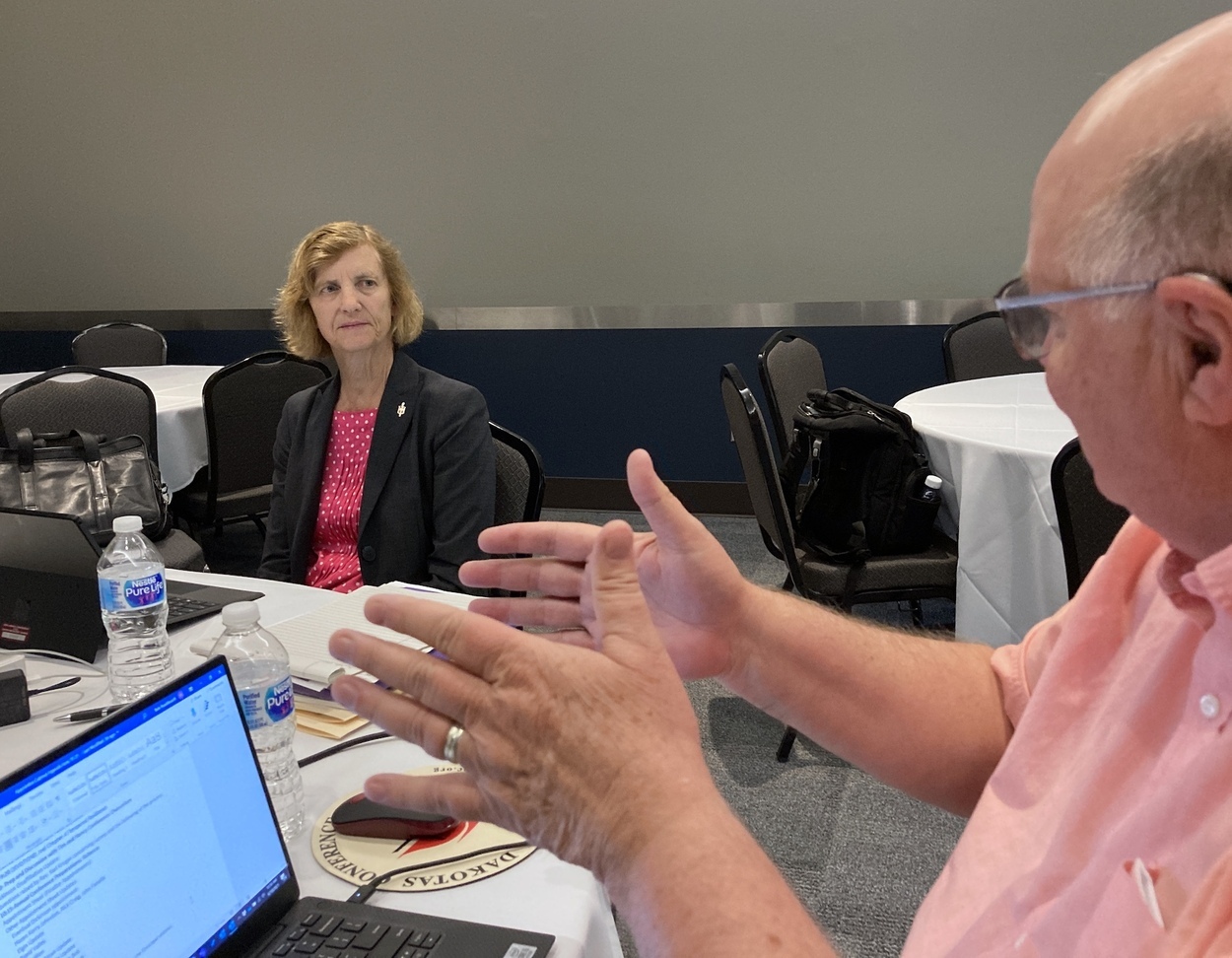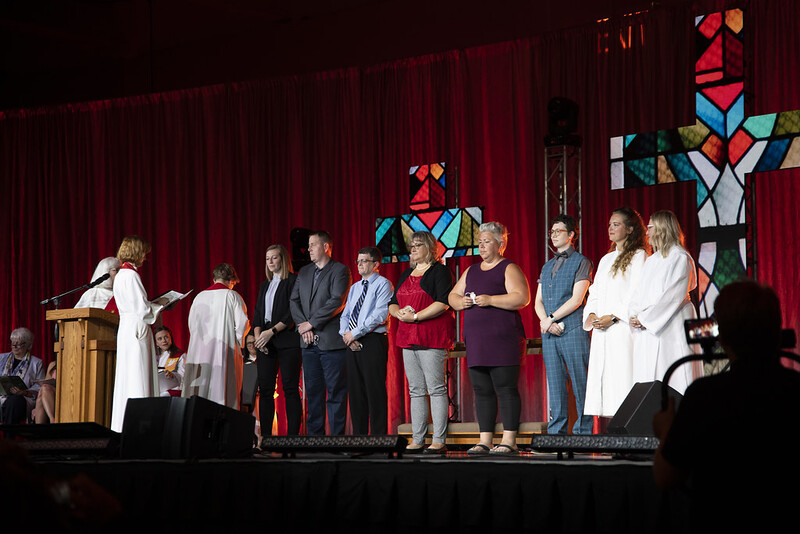
The appointment process of the Dakotas Cabinet

The Dakotas appointive cabinet meets in June, 2021.
This time of year is known as appointment season. It is a time when United Methodists across the Dakotas may hear that their pastor is moving to a new church. What is the appointment process and how does it work?
A word about the process
Our United Methodist process of matching pastors and congregations is a "send" process; pastors are sent (appointed) to a congregation by the bishop and cabinet (the district superintendents or DS). Some other denominations have a "call" system, whereby a local congregation "calls" or hires their pastor. All systems of matching pastors and congregations have their strengths and weaknesses. Our appointment process usually includes the following strengths:
- The appointment of pastors and churches is based upon the missional needs of the church, not a process of hiring pastors who suit the preferences of the local church leadership.
- Every church is appointed a pastor and every pastor is appointed to a church. There may be a few exceptions here.
- The bishop/cabinet serve as the "search committee" to find the right pastor/congregation match.
- Pastors have freedom for preaching the gospel without fear of being "fired."
- Congregations may ask for a pastoral change without having to go through a painful "fight" to remove a pastor.
- Pastors may ask for a change of appointment without losing their job.
- Pastors may be appointed on the basis of their gifts and grace for ministry, without regard to their gender, ethnic background, or age.
- A pastor whose fitness and effectiveness for ministry are monitored by the Board of Ordained Ministry serves local congregations.
- Both the appointed pastors and the congregations to which they are appointed belong to a connection, which can provide support, training, mediation, and prayerful supervision.
- Moving costs for pastors are paid through Conference apportionments, not by the local church or the pastor.

During an actual appointive cabinet meeting, Rev. Rebecca Trefz enjoys a moment of levity while "the photographer is in the room."
The people involved in the appointment process
All clergy (ordained elders, ordained deacons, commissioned ministers, and local pastors) are appointed to their places of ministry by the bishop assigned to the Dakotas-Minnesota Area. The bishop works through the district superintendents, who help the bishop by supervising a portion of the Area, called a District. In addition, the Board of Ordained Ministry of the Conference (composed of laity and clergy) approves clergy for ministry, deems them appointable, monitors their fitness, and provides for their continuing education, removal from ministry, retirement, and other changes of their status. The local congregation is represented in the appointment process by the Pastor-Parish Relations Committee (PPRC) (or in larger churches it may be called the Staff-Parish Relations Committee) that is elected by the annual Charge Conference of the congregation.
Here is how the appointment process works:
First, we gather the information. Each year, each pastor serving a local church is scheduled to have a “one-on-one” conversation with his/her superintendent. Among other things, during that conversation, the pastor is invited to talk about their current and future appointment, and if indeed, they are either open to a new appointment, asking for a new appointment, or talk about why the current appointment is the best at this time. Later in the fall, the pastors are asked to fill out a Stay/Move Form, and to formally designate their hopes concerning an appointment.
Each fall, each congregation is invited to update its parish profile, and also to denote whether they believe it’s in the best interest of the mission of the charge to keep their current pastor, or to ask for an appointment of a new pastor.

Southwest District superintendent Bob Ruedebusch clarifies his point with Bishop Laurie Haller.
Next, we pray and make the best decisions. At a retreat each January, the cabinet meets to create the big picture of which churches and which pastors “need” a move. That also includes retirements, and those pastors newly entering the pool as seminary graduates or newly licensed pastors. A great deal of prayer and time is taken to try to fit all of the pieces together. The work then begins to contact pastors who will move, and begin the process of introductions of pastors with churches.
We use the image of “chains” in making appointments; that is, as we begin with a church that has a clear opening (due to retirement or such), the superintendent meets with the SPRC of the church to confirm the profile of the church, and to fine-tune the church’s needs in a pastor. Very often, the profile fits well with what the cabinet has estimated to be needed in each church, since it is the superintendent’s role to know the churches, the pastors, and their needs. If the profile is a match to what the superintendents believe is the best pastor to serve, the next step is to contact the incoming pastor and inform them of the intention to appoint them to the new charge.
We introduce the new pastor and the new charge. An introduction is set up and the superintendent, new pastor, and SPRC meet as an “introduction,” not an “interview.” The bishop is responsible for each appointment, and unless there would be red flags that arise during the introduction, the pastor introduced becomes the new pastor to be appointed to the new charge at Annual Conference.
As that appointment is made, a hole is created with the pastor’s intended leaving; a new link in the chain occurs as the process continues of profiling, contacting the pastor, and introducing the pastor in each new church setting.
Yes, on rare occasion something is missed in the process, and the bishop and cabinet, either by their own determination or by the request of the pastor or parish, will reconsider the appointment to be made. Sometimes, that means a new pastor is selected, but sometimes the same pastor is selected to serve.

New pastors are recognized by Bishop Laurie Haller at the Dakotas Annual Conference in Sioux Falls, South Dakota in June, 2021. Photo by jlynnstudios.
After each new pastor is introduced, an announcement is made in both charges concerning the change, and the charge and pastor prepare to begin the new ministry relationship. After the appointments are “fixed” at Annual Conference in June, the new pastors begin their appointments July 1.
Appointments and appointment changes are formally made at Annual Conference time and begin on July 1 of the year. Obvious exceptions include unexpected deaths or other events that remove a pastor from their appointment between Annual Conferences. Each Monday, appointments that have completed the process are posted on the Dakotas Conference website at this link.
(This article was originally written and posted while Rev. Cross was a District superintendent for the Dakotas Conference, in 2017. It has been slightly updated to reflect current practice and terminology.)